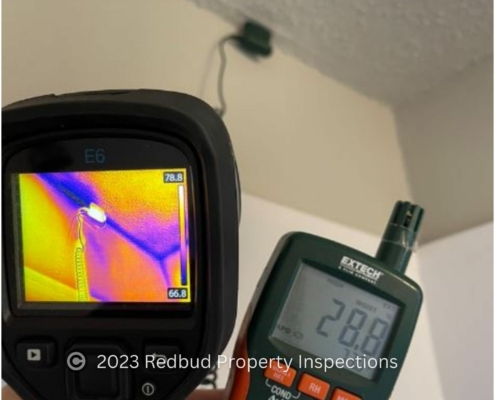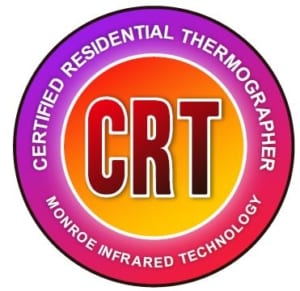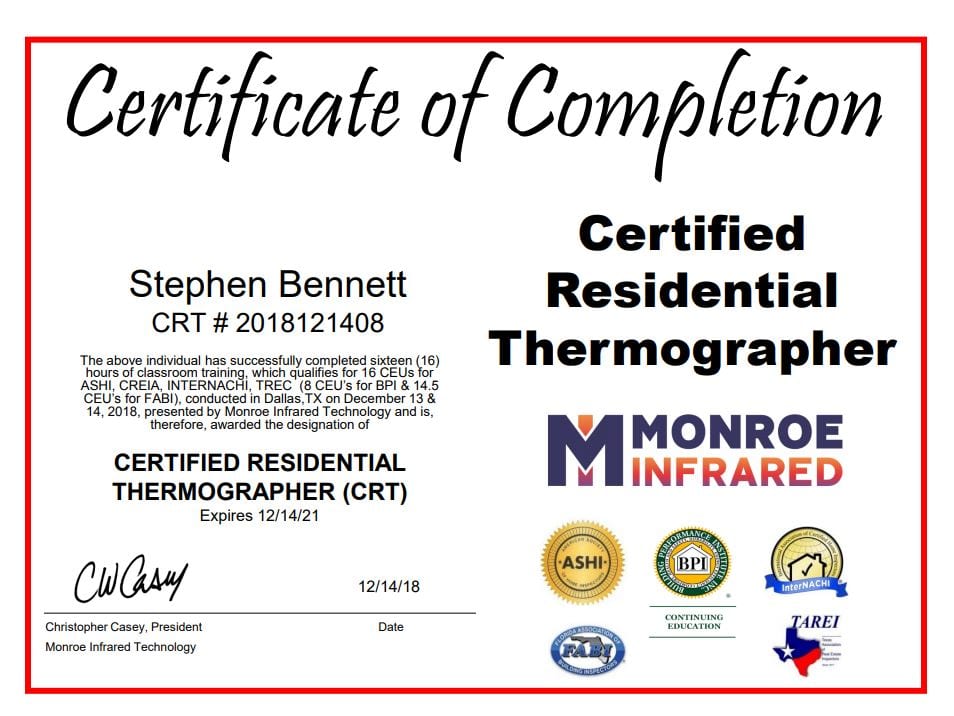Thermal imaging is a newer and technologically advanced way that inspectors have begun to use during home inspections, allowing them to be even more accurate in their reports and analysis.
Here are 4 benefits of thermal imaging technology during a home inspection, and why Redbud Inspections chooses to utilize it.

1. Mold and Moisture Damage
While thermal technology cannot definitively prove that there is a mold problem with a home, it can tip an inspector off that there might be raised moisture levels that are worth looking into.
Home inspections are a non-invasive process, meaning that the inspector doesn’t rip anything apart to look deeper into the home, they simply look at what is accessible and judge the condition based on that.
Thermal imaging allows the inspector to see if there are irregular changes in temperature – therefore if the house has a mold or moisture issue, there may be warm or cold spots on a wall where there shouldn’t be.
This then tells the inspector that something isn’t right, and that a mold test may need to be carried out.

2. Ability to Detect Electrical Faults
Infrared technology has the ability to identify temperature, which makes it particularly useful in distinguishing electrical faults and areas where an overload of electricity is causing heat.
At the point when electrical faults are building and an electrical circuit has too much energy being directed through it, the area becomes hotter and can cause electrical fires.
Infrared cameras can reveal that the site has elevated temperatures, and can show the inspectors the issue before it is completely overloaded and ignites or shorts out.
3. Reveals the Energy Efficiency of the Home
An advantage of thermal imaging is that it enables the home inspector to have a deeper insight into the condition and energy efficiency of the materials that the home has.
The temperature detection of the equipment can show whether certain places inside of the home are releasing energy or not based on the temperature that they are versus what one would expect them to be.
Doors, entryways, and windows can be identified as the reason for energy loss as well.
This is significant for individuals who are purchasing a home, since they can present the report to the owners and prove that the house is not energy-efficient. Often, this report can be used to sway the seller’s stance on the price and gain a lower sale price of the home.

4. Unwelcomed Pests
Perhaps one of the best uses for thermal technology is detecting unwelcome pests that have made their way into a home.
Similar to the way that infrared can detect moisture, the difference in temperature in an animal or insect’s body will alert the inspector that there may be something within the walls that should not be there!
Steve Bennett of Redbud Property Inspections in Edmond, Oklahoma is a Certified Residential Thermographer (CRT). The CRT certification is nationally recognized by the American Society of Home Inspectors and the International Association of Certified Home Inspectors. Home inspectors successfully completing the CRT certification requirements learn about the science of thermal imaging, methods of heat transfer, and thermal capacities. They also learn about the limitations of thermal imaging and how to avoid false readings. By becoming a Certified Residential Thermographer, a home inspector can provide a more thorough home inspection by detecting electrical, moisture, energy issues, and even pests, such as termites and bees, which the naked eye can’t see.
Don’t Wait – Schedule an Inspection Today!
Your home is one of the biggest investments you’ll ever make. Protect that investment and the future it represents by working with a company that received their Certified Residential Thermographer (CRT) designation through Monroe Infrared. Schedule a home inspection with Redbud Property Inspections today!





